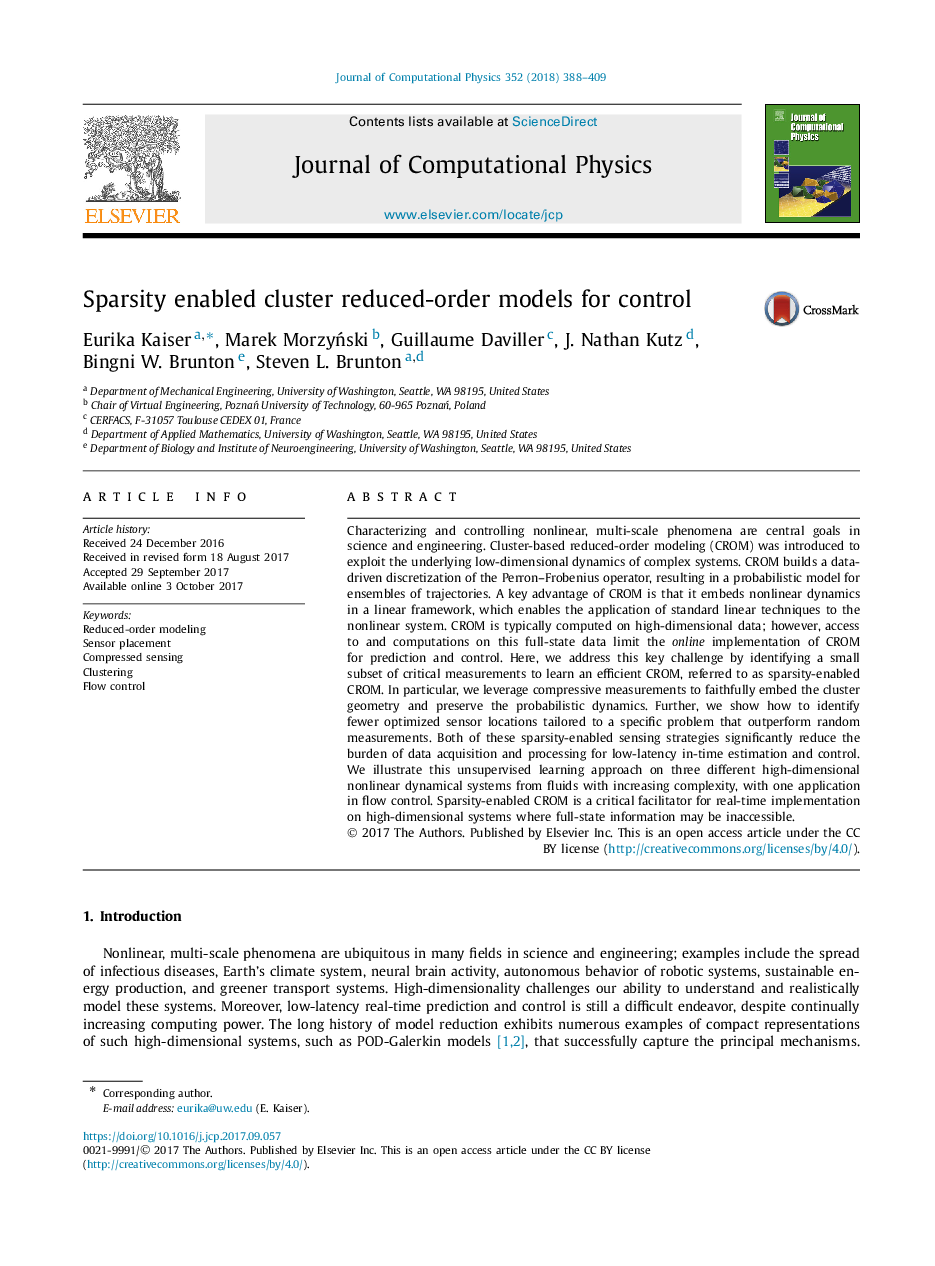| کد مقاله | کد نشریه | سال انتشار | مقاله انگلیسی | نسخه تمام متن |
|---|---|---|---|---|
| 4967055 | 1449361 | 2018 | 22 صفحه PDF | دانلود رایگان |
عنوان انگلیسی مقاله ISI
Sparsity enabled cluster reduced-order models for control
ترجمه فارسی عنوان
انشعاب خوشه ای مدل های کاهش سفارش را برای کنترل فراهم می کند
دانلود مقاله + سفارش ترجمه
دانلود مقاله ISI انگلیسی
رایگان برای ایرانیان
کلمات کلیدی
مدل سازی کاهش یافته، قرار دادن سنسور، سنجش فشرده، خوشه بندی کنترل جریان،
موضوعات مرتبط
مهندسی و علوم پایه
مهندسی کامپیوتر
نرم افزارهای علوم کامپیوتر
چکیده انگلیسی
Characterizing and controlling nonlinear, multi-scale phenomena are central goals in science and engineering. Cluster-based reduced-order modeling (CROM) was introduced to exploit the underlying low-dimensional dynamics of complex systems. CROM builds a data-driven discretization of the Perron-Frobenius operator, resulting in a probabilistic model for ensembles of trajectories. A key advantage of CROM is that it embeds nonlinear dynamics in a linear framework, which enables the application of standard linear techniques to the nonlinear system. CROM is typically computed on high-dimensional data; however, access to and computations on this full-state data limit the online implementation of CROM for prediction and control. Here, we address this key challenge by identifying a small subset of critical measurements to learn an efficient CROM, referred to as sparsity-enabled CROM. In particular, we leverage compressive measurements to faithfully embed the cluster geometry and preserve the probabilistic dynamics. Further, we show how to identify fewer optimized sensor locations tailored to a specific problem that outperform random measurements. Both of these sparsity-enabled sensing strategies significantly reduce the burden of data acquisition and processing for low-latency in-time estimation and control. We illustrate this unsupervised learning approach on three different high-dimensional nonlinear dynamical systems from fluids with increasing complexity, with one application in flow control. Sparsity-enabled CROM is a critical facilitator for real-time implementation on high-dimensional systems where full-state information may be inaccessible.
ناشر
Database: Elsevier - ScienceDirect (ساینس دایرکت)
Journal: Journal of Computational Physics - Volume 352, 1 January 2018, Pages 388-409
Journal: Journal of Computational Physics - Volume 352, 1 January 2018, Pages 388-409
نویسندگان
Eurika Kaiser, Marek MorzyÅski, Guillaume Daviller, J. Nathan Kutz, Bingni W. Brunton, Steven L. Brunton,
